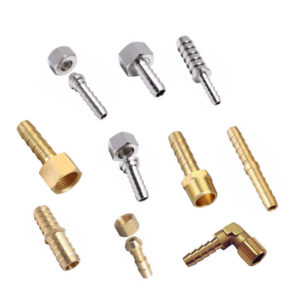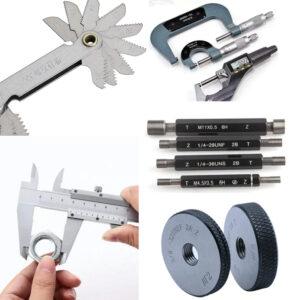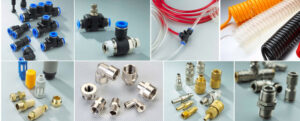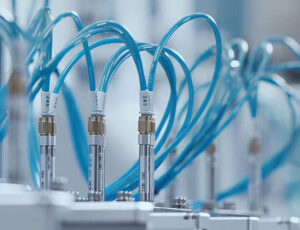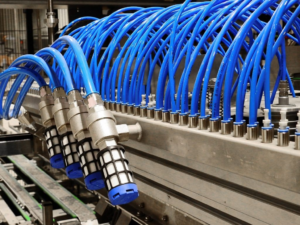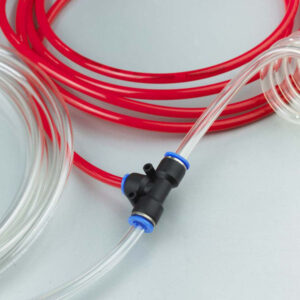I. Introduction
Pneumatic and hydraulic systems are two types of power transmission systems that are commonly used in various industries and applications. Pneumatic systems use compressed air to transmit power and control motion, while hydraulic systems use pressurized fluid (usually oil) to achieve the same purpose. Although both systems have similar functions, they differ in their operating principles, components, and applications. Therefore, it is important to understand the differences between pneumatic and hydraulic systems in order to choose the right system for each specific task. In this article, we will explore the main differences between pneumatic and hydraulic systems and provide examples of their applications.
II. Operating Principles
A. Pneumatic Systems
Pneumatic systems use compressed air as the working fluid to transmit power and control motion. Compressed air is stored in a tank or generated by a compressor, and then distributed through a network of pipes or hoses to various components such as valves, actuators, and cylinders. When the compressed air enters a component, it expands and creates a force that moves the component in a desired direction. The force and speed of the component can be controlled by adjusting the pressure and flow rate of the compressed air. Pneumatic systems are known for their simplicity, low cost, and ease of maintenance.
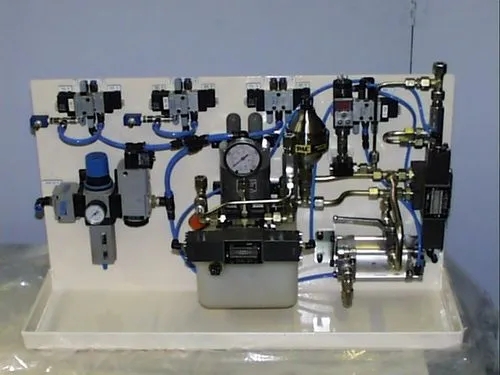
B. Hydraulic Systems
Hydraulic systems use pressurized fluid (usually oil) as the working fluid to transmit power and control motion. The oil is stored in a reservoir and pumped by a hydraulic pump through a network of pipes or hoses to various components such as valves, cylinders, and motors. When the pressurized oil enters a component, it creates a force that moves the component in a desired direction. The force and speed of the component can be controlled by adjusting the pressure and flow rate of the oil. Hydraulic systems are known for their high power density, precision, and ability to handle heavy loads.
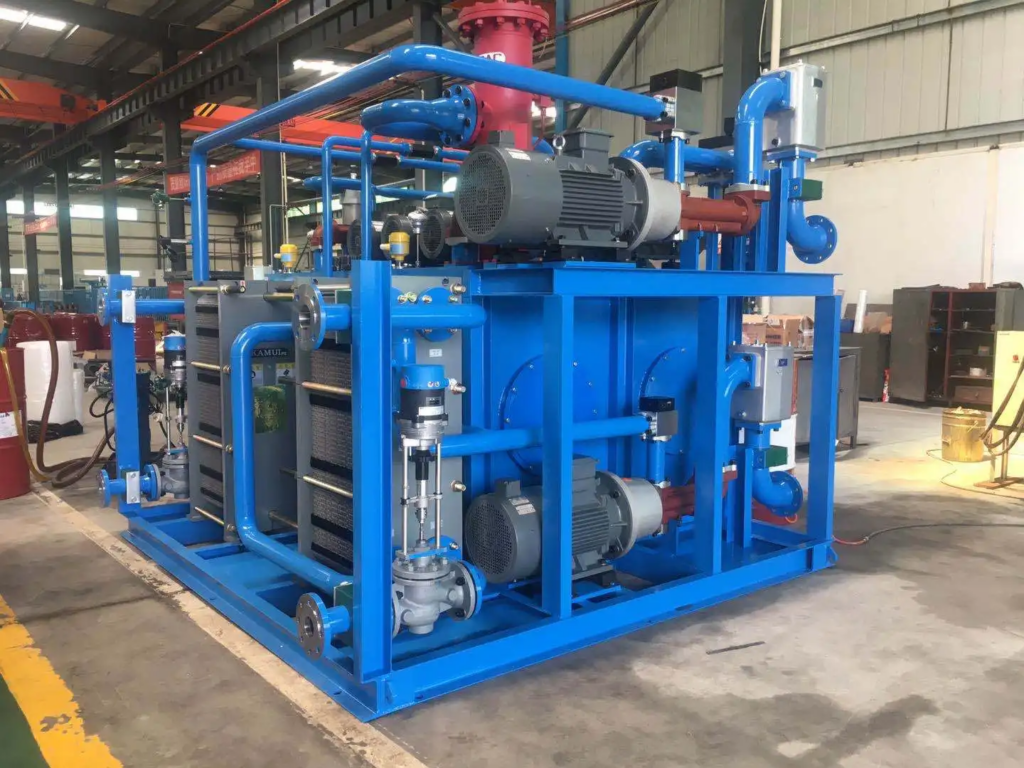
C. Comparison of Advantages and Disadvantages
Pneumatic systems have several advantages over hydraulic systems, such as:
- Simplicity and ease of use
- Low cost and availability of components
- Clean operation without oil leaks or spills
- High speed and fast response time
- Suitable for low to medium power applications
However, pneumatic systems also have some disadvantages, such as:
- Limited power output and force
- Limited precision and accuracy
- Limited temperature range
- Limited energy efficiency
Hydraulic systems have several advantages over pneumatic systems, such as:
- High power output and force
- High precision and accuracy
- Wide temperature range
- High energy efficiency
- Suitable for high power and heavy-duty applications
However, hydraulic systems also have some disadvantages, such as:
- Complexity and higher cost
- Need for oil maintenance and filtration
- Risk of oil leaks or spills
- Slower response time and lower speed
In summary, the choice between pneumatic and hydraulic systems depends on the specific requirements of the application, such as power, speed, precision, cost, and environmental factors.
III. Components
A. Pneumatic Systems
Pneumatic systems consist of several components that work together to transmit power and control motion. Some of the common components are:
- Compressors: These are used to generate compressed air by compressing atmospheric air. Compressors can be of various types, such as reciprocating, rotary, or centrifugal, depending on the application.
- Filters: These are used to remove impurities and moisture from the compressed air before it enters the system. Filters can be of various types, such as particulate, coalescing, or adsorption, depending on the level of filtration required.
- Regulators: These are used to control the pressure of the compressed air by reducing or increasing the flow rate. Regulators can be of various types, such as manual, automatic, or proportional, depending on the precision required.
- Valves: These are used to control the direction, flow, and pressure of the compressed air by opening or closing different ports. Valves can be of various types, such as directional control valves, flow control valves, or pressure relief valves, depending on the function required.
- Actuators: These are used to convert the energy of the compressed air into mechanical motion by moving a piston or a diaphragm. Actuators can be of various types, such as cylinders, rotary actuators, or grippers, depending on the application.
- Fittings: These are used to connect different components of the system, such as pipes, hoses, or valves. Fittings can be of various types, such as push-in fittings, quick-connect couplings, or threaded fittings, depending on the ease of installation and removal.
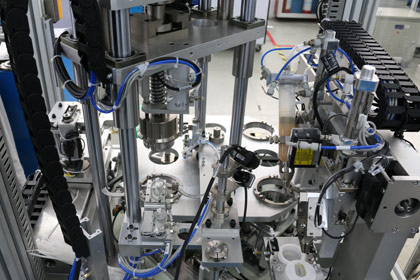
B. Hydraulic Systems
Hydraulic systems also consist of several components that work together to transmit power and control motion. Some of the common components are:
- Pumps: These are used to generate hydraulic pressure by pumping oil from a reservoir to the system. Pumps can be of various types, such as gear pumps, piston pumps, or vane pumps, depending on the flow rate and pressure required.
- Filters: These are used to remove impurities and contaminants from the hydraulic oil before it enters the system. Filters can be of various types, such as suction filters, pressure filters, or return filters, depending on the location and function required.
- Valves: These are used to control the direction, flow, and pressure of the hydraulic oil by opening or closing different ports. Valves can be of various types, such as directional control valves, flow control valves, or pressure relief valves, depending on the function required.
- Cylinders: These are used to convert the energy of the hydraulic oil into mechanical motion by moving a piston or a rod. Cylinders can be of various types, such as single-acting or double-acting cylinders, telescopic cylinders, or rodless cylinders, depending on the application.
- Hoses: These are used to connect different components of the system, such as pumps, valves, or cylinders. Hoses can be of various types, such as high-pressure hoses, low-pressure hoses, or flexible hoses, depending on the location and function required.
- Accumulators: These are used to store hydraulic energy and release it when needed, such as during peak demand or emergency situations. Accumulators can be of various types, such as bladder accumulators, piston accumulators, or diaphragm accumulators, depending on the volume and pressure required.
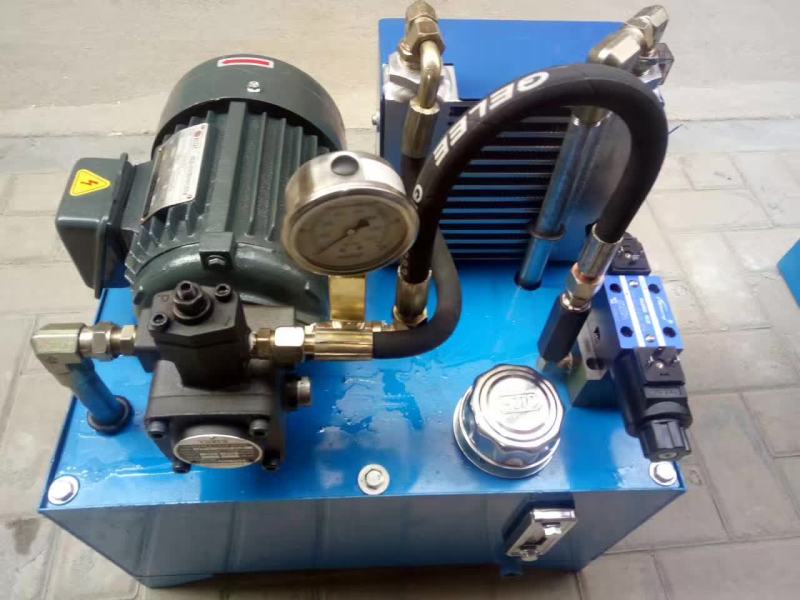
In summary, both pneumatic and hydraulic systems have similar components, but they differ in their design, size, and function. The choice of components depends on the specific requirements of the application, such as pressure, flow rate, temperature, and reliability.
IV. Applications
A. Pneumatic Systems
Pneumatic systems are widely used in various industries and applications where low to medium power is required. Some of the common applications are:
- Manufacturing: Pneumatic systems are used in assembly lines, packaging machines, and material handling equipment to control motion and perform tasks such as gripping, lifting, and pushing.
- Automation: Pneumatic systems are used in robotics, CNC machines, and other automated systems to control motion and perform tasks such as cutting, drilling, and welding.
- Transportation: Pneumatic systems are used in vehicles, such as buses, trucks, and trains, to control brakes, suspensions, and doors.
- Construction: Pneumatic systems are used in pneumatic tools, such as jackhammers, nail guns, and paint sprayers, to perform tasks that require high speed and force.
Pneumatic systems are suitable for these applications because they are:
- Low cost and easy to install
- Easy to maintain and repair
- Clean and environmentally friendly
- Fast and responsive
- Safe and reliable
B. Hydraulic Systems
Hydraulic systems are commonly used in industries and applications where high power and heavy-duty operation are required. Some of the common applications are:
- Aerospace: Hydraulic systems are used in aircrafts, such as landing gears, flaps, and brakes, to control motion and perform tasks that require high pressure and precision.
- Mining: Hydraulic systems are used in mining equipment, such as excavators, loaders, and bulldozers, to perform tasks that require high force and durability.
- Robotics: Hydraulic systems are used in industrial robots, such as welding robots, painting robots, and material handling robots, to control motion and perform tasks that require high precision and repeatability.
Hydraulic systems are suitable for these applications because they are:
- High power and high force
- Precise and accurate
- Durable and reliable
- Able to handle high pressure and temperature
- Able to operate in harsh environments
In summary, the choice between pneumatic and hydraulic systems depends on the specific requirements of the application, such as power, speed, precision, cost, and environmental factors. Both systems have their advantages and disadvantages, and both have a wide range of applications in various industries.
V. Comparison Chart
Here is a visual chart summarizing the differences between pneumatic and hydraulic systems in terms of operating principles, components, and applications:
| Criteria | Pneumatic Systems | Hydraulic Systems |
| Operating Principle | Compressed air | Pressurized fluid (usually oil) |
| Components | Compressors, filters, regulators, valves, actuators, fittings | Pumps, filters, valves, cylinders, hoses, accumulators |
| Advantages | Low cost, easy maintenance, clean operation, high speed | High power, high force, high precision, durable |
| Disadvantages | Limited power, limited precision, limited temperature range, limited efficiency | Complexity, higher cost, oil maintenance, oil leaks, slower response |
| Applications | Manufacturing, automation, transportation, construction | Aerospace, mining, robotics, heavy-duty |
This chart provides a quick comparison of the main differences between pneumatic and hydraulic systems, highlighting their strengths and weaknesses in terms of operating principles, components, advantages, disadvantages, and applications. It can be used as a reference for choosing the right system for a specific task, based on the requirements and constraints of the application.
VI. Conclusion
In conclusion, pneumatic and hydraulic systems are two types of power transmission systems that have different operating principles, components, advantages, disadvantages, and applications. Pneumatic systems use compressed air to transmit power and control motion, while hydraulic systems use pressurized fluid (usually oil) to achieve the same purpose. Both systems have their strengths and weaknesses, and the choice between them depends on the specific requirements of the application, such as power, speed, precision, cost, and environmental factors.
It is important to choose the right system for each specific task, based on a careful analysis of the requirements and constraints of the application. By understanding the differences between pneumatic and hydraulic systems, one can make an informed decision and achieve the desired performance and efficiency.
We invite you to learn more about pneumatic and hydraulic systems by contacting us. Our experts are always ready to provide technical support and advice.

